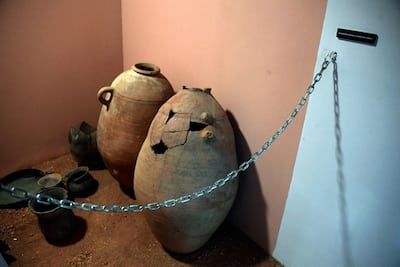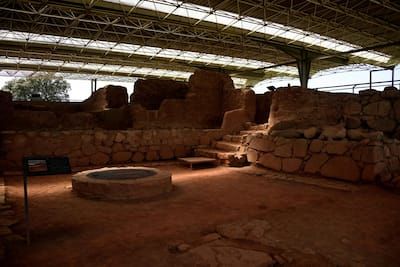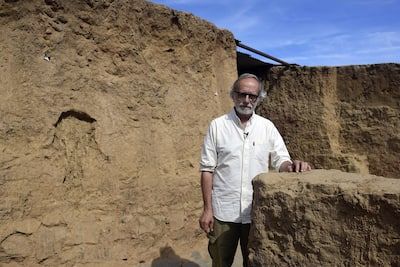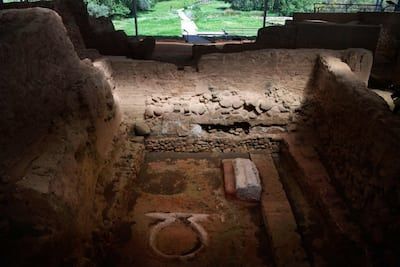Historians of Antiquity presented it as the oldest civilization in Western Europe: 3000 years after its appearance on the Iberian Peninsula, the Tartessian culture is gradually revealing its secrets, thanks to the meticulous work of a handful of archaeologists.
• Read also – Frescoes inspired by the Trojan War discovered in Pompeii
• Read also – Colombia: treasure of “incalculable value” from famous wreck soon brought to the surface
• Read also – Remains of the “Lost City” under threat in Ecuador
“The civilization of the Tartessos” has long remained “mysterious” but today the pieces of the puzzle are “falling into place”, smiles Sebastián Celestino, contemplating the remains of a stone and cob building raked up by a dozen researchers , trowel and brush in hand.
Member of the Higher Council for Scientific Research (CSIC), this 66-year-old archaeologist directs the excavations carried out since 2015 at Casas del Turuñuelo, a site located in the heart of the Extremadura region, in the municipality of Guareña (southwest of the ‘Spain). A site of “great wealth”, he assures AFP.
This is where five sculptures of faces were unearthed last year, two of which were adorned with opulent earrings. A major discovery in the eyes of historians, who have been interested for years in this civilization and the reasons for its disappearance.
“It is the first time that we found human figures linked to the Tartessian world,” explains Sebastián Celestino, oval glasses and white beard, emphasizing the “magnificent state of conservation” of this ancient sanctuary: “it is a luxury to work here!”
AFP
Myths and reality
Born from contact between the Iberian population and settlers from Phenicia or Greece, the Tartessian civilization flourished between the 9th and 5th centuries BC in western Andalusia, Extremadura and southern Portugal.
Mentioned by Herodotus and Pliny the Elder, it has long been the subject of wild theories, notably due to contradictory descriptions – several sources speaking of a city, others of a kingdom, others of a river or a body of water.

AFP
“There is a whole series of myths” around the Tartessos, which some have even linked “to Atlantis,” says Esther Rodriguez, co-responsible for the Turuñuelo excavations. Theories “dismantled” by “archaeological work”, she adds.
Launched after the discovery in 1958 near Seville of the treasure of El Carambolo, considered the first proof of the existence of the Tartessos, the excavations have intensified in recent years, with the use of technologies recreating 3D images of the various remains. .
This work showed that the Tartessos had “elaborate construction techniques”, continues Esther Rodriguez, who paints the portrait of a prosperous civilization, thanks to the metal resources of the region which the Greeks and Phoenicians were fond of.

AFP
Sealed Temple
In total, several dozen Tartessian sites have been identified, particularly in the Guadiana River valley. Three of them, hidden under vast mounds of earth, have been the subject of extensive excavations: Casas del Turuñuelo, La Mata and Cancho Roano.
Accidentally discovered by a farmer in 1978, this last monumental ensemble of 500 square meters, built in the 6th century BC, houses three stone temples each built on the ruins of the previous one, all oriented towards the rising sun.
Cancho Roano had a “religious function” but also a “commercial” one: “we celebrated major events there,” says Javier Paredes, former mayor of the neighboring town of Zalamea de la Serena and responsible for the site, open to visitors since 2001.
Between the walls of this sanctuary, bronze figurines were discovered, as well as gold jewelry, marble plaques and ceramic pieces, sometimes from Greece. “This shows that they traded a lot,” insists the fifty-year-old.

AFP
According to archaeologists, the site was burned by the Tartessos themselves two centuries after its construction, probably after an animal sacrifice, then covered with a large quantity of earth. An end similar to that of Casas del Turuñuelo, where 42 horse corpses were discovered lined up on the ground.
Sudden disappearance
The fact that these sites were buried explains “their good state of conservation”, notes Sebastián Celestino, who specifies that all of the Tartessian sanctuaries in the region experienced the same fate, around 400 BC – the time when the date is the end of the Tartessos.
Why this strange rite? “Completely covering these buildings involves long days of work,” recalls Esther Rodriguez. But it was probably “a way of protecting” these sanctuaries, she adds.

AFP
In recent years, several avenues have been put forward to explain the disappearance of the Tartessos, such as severe drought or, conversely, recurring floods, which would have made the land uncultivable and forced the inhabitants to leave.
But on this point as on others, historians must be content with simple hypotheses, notably due to lack of decipherable sources: the Tartessos certainly had a writing system, based on the Phoenician alphabet, but no one has succeeded in doing so. moment to decipher it.
“Knowledge is progressing” but “we still have a lot to learn,” concedes philosopher Sebastián Celestino.











